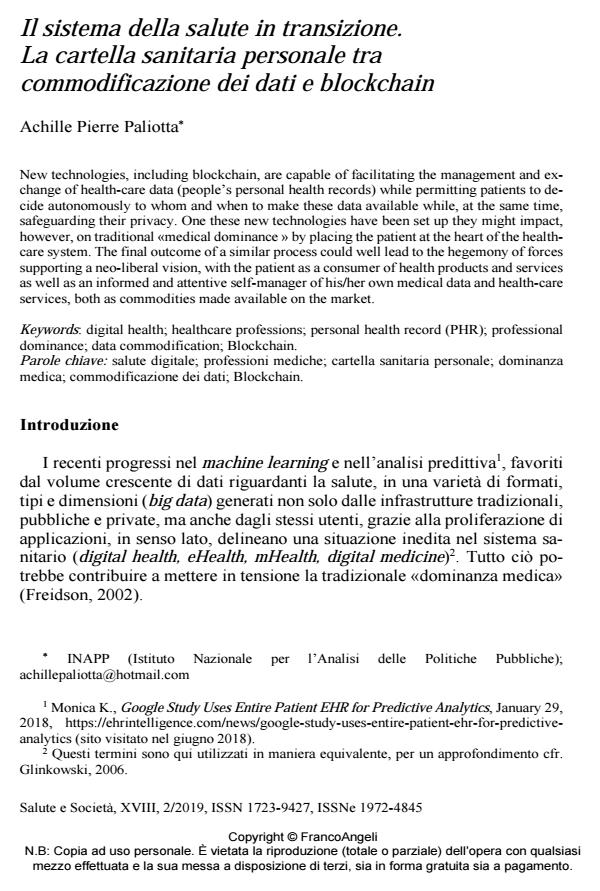Il sistema della salute in transizione. La cartella sanitaria personale tra commodificazione dei dati e blockchain
Titolo Rivista SALUTE E SOCIETÀ
Autori/Curatori Achille Pierre Paliotta
Anno di pubblicazione 2019 Fascicolo 2019/2
Lingua Italiano Numero pagine 16 P. 160-175 Dimensione file 215 KB
DOI 10.3280/SES2019-002013
Il DOI è il codice a barre della proprietà intellettuale: per saperne di più
clicca qui
Qui sotto puoi vedere in anteprima la prima pagina di questo articolo.
Se questo articolo ti interessa, lo puoi acquistare (e scaricare in formato pdf) seguendo le facili indicazioni per acquistare il download credit. Acquista Download Credits per scaricare questo Articolo in formato PDF

FrancoAngeli è membro della Publishers International Linking Association, Inc (PILA)associazione indipendente e non profit per facilitare (attraverso i servizi tecnologici implementati da CrossRef.org) l’accesso degli studiosi ai contenuti digitali nelle pubblicazioni professionali e scientifiche
New technologies, including blockchain, are capable of facilitating the management and ex-change of health-care data (people’s personal health records) while permitting patients to de-cide autonomously to whom and when to make these data available while, at the same time, safeguarding their privacy. One these new technologies have been set up they might impact, however, on traditional «medical dominance » by placing the patient at the heart of the health-care system. The final outcome of a similar process could well lead to the hegemony of forces supporting a neo-liberal vision, with the patient as a consumer of health products and services as well as an informed and attentive self-manager of his/her own medical data and health-care services, both as commodities made available on the market.
Parole chiave:Salute digitale; professioni mediche; cartella sanitaria personale; dominanza me-dica; commodificazione dei dati; Blockchain.
Achille Pierre Paliotta, Il sistema della salute in transizione. La cartella sanitaria personale tra commodificazione dei dati e blockchain in "SALUTE E SOCIETÀ" 2/2019, pp 160-175, DOI: 10.3280/SES2019-002013